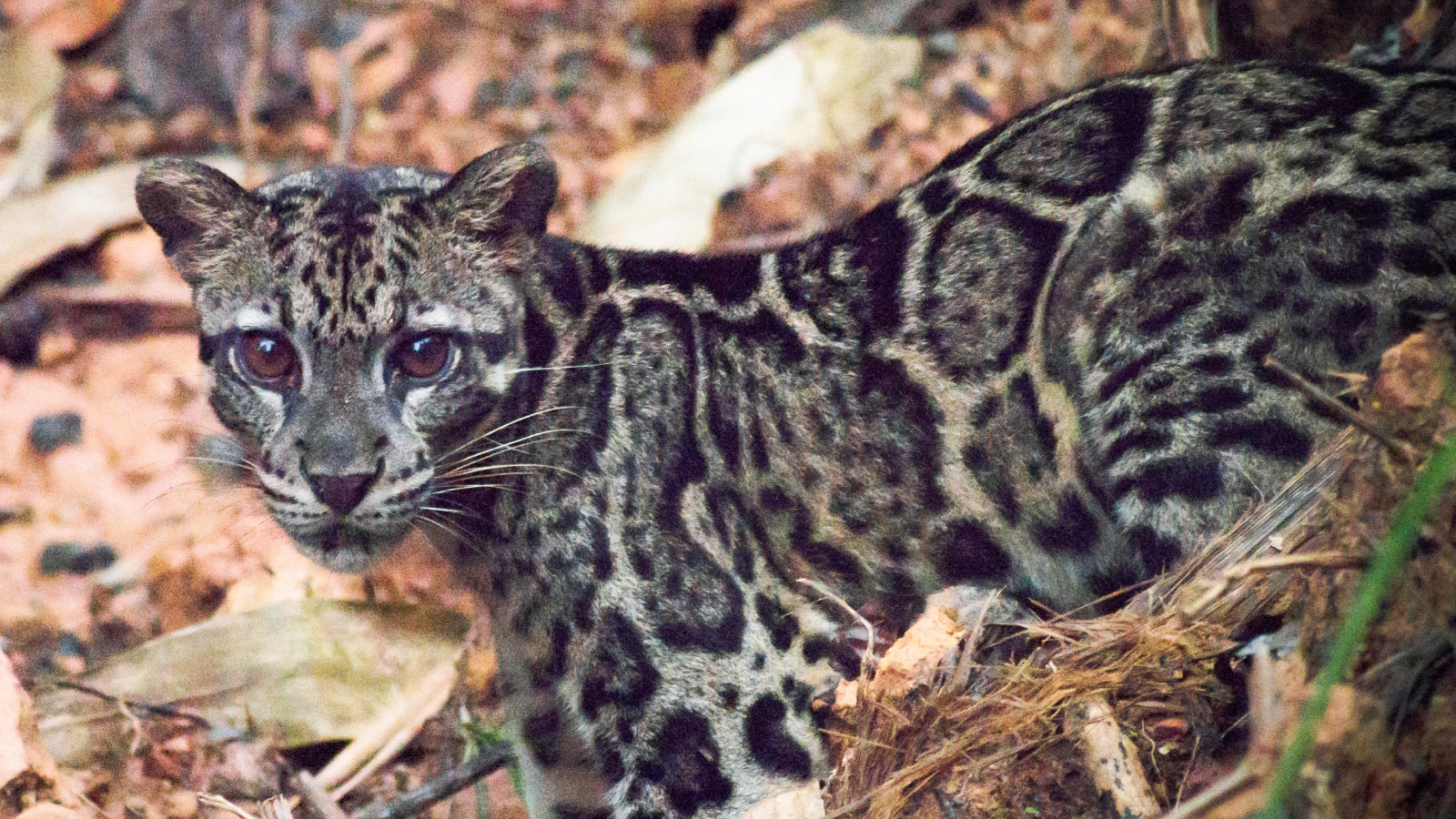First-of-its-kind footage has captured a family of endangered Bornean clouded leopards walking through a forest in Indonesian Borneo.
Camera traps in Tanjung Puting National Park recorded a mother Bornean clouded leopard (Neofelis diardi borneensis) and her two young cubs. The footage is an encouraging sign that the species is still reproducing.
Staff from the conservation organization Orangutan Foundation placed camera traps throughout the forest to record animal species and their whereabouts in the area.
On April 9, the team discovered one of the cameras had recorded a clouded leopard family. While previous footage has captured these wild cats in the area, this is the first time a family has been filmed together, according to an Orangutan Foundation statement.
The Bornean clouded leopard is one of two subspecies of Sunda clouded leopard in Indonesia. The other, named the Sumatran clouded leopard (Neofelis diardi diardi), lives on the island of Sumatra.
Related: Clouded leopard: The cat with saber-like teeth that can walk upside down in trees
Bornean clouded leopards have small cloud markings with distinct spots and a bold double dorsal stripe, according to the World Wide Fund for Nature (WWF).
They are incredibly agile forest hunters that have flexible joints for running and jumping in the canopies — their ankles can rotate 180 degrees to descend down trees headfirst. They typically feed on monkeys, cats and rodents in the dense forests.

As the largest predators in Borneo, these cats play a key role in maintaining the ecosystem, Anxious Yoga Perdana, research manager at the Orangutan Foundation, said in the statement.
Overall, little is known about Sunda clouded leopards because of their nocturnal nature, according to the World Land Trust. They are believed to breed all year round and reach sexual maturity at 2 years old, but they are thought to rarely make it to reproductive age because of illegal poaching and habitat destruction.
Borneo has one of the highest deforestation rates in the world, according to the WWF. Between 1973 and 2015, the forest in Borneo has reduced by 50% because of deforestation, according to a 2020 study.
Habitat loss from deforestation has reduced the Bornean clouded leopard population to likely less than a third in recent years, according to the Orangutan Foundation statement. The International Union for Conservation of Nature (IUCN) has listed this species as endangered and its population status as decreasing.
This new footage gives researchers hope that Bornean clouded leopards are still successfully reproducing. "Being able to see a female and cubs gives us evidence that they are healthy and actively breeding," Perdana said.







